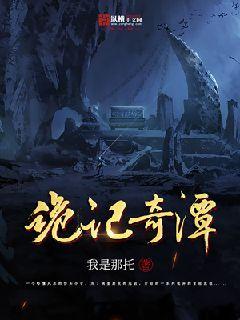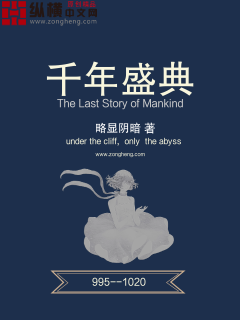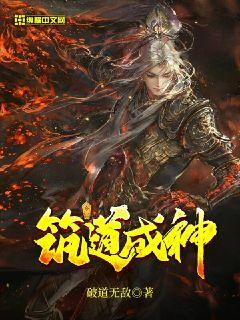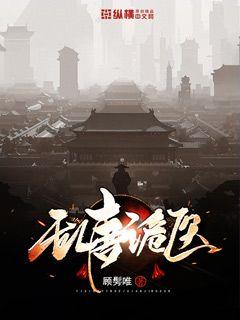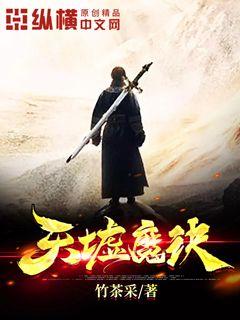国足世预赛直播免费在线观看|国足世预赛直播免费在线观看
- 来源:国足对日本直播比赛
- 2024-11-25 05:09:51

### 文章摘要
在足球比赛中,球员裤裆下的关键运动是战略的中心。这一区域不仅是技战术的焦点,也直接影响到球队的整体表现。本文将从多个角度深入探讨这一主题,包括身体力量与平衡、战术位置与动作、心理因素与集体默契以及对抗与防守策略,揭示裤裆下动作在足球战局中的关键作用。
---
1、身体力量与平衡
足球运动员在裤裆下的动作不仅仅是技术动作的一部分,更是身体力量与平衡的体现。良好的身体控制能够帮助球员在争顶、身体接触等情况下保持稳定。训练中的重心调整和核心力量提升对于这一区域尤为重要。
技术动作中的细微调整,如脚下球的接触、射门动作中的姿势调整,都直接关系到球员在竞技场上的表现。身体力量和平衡能力的提升,不仅使得这些动作更为精准,也提升了球队的整体执行力。
通过训练强化裤裆下动作的力量和平衡感,不仅提升了球员个体的技战术水平,也为球队在比赛中的战术执行力提供了坚实的基础。
2、战术位置与动作
裤裆下的运动不仅关乎个体技术,更深刻影响到整体战术的布局与执行。在战术位置上,球员如何利用这一区域来拉开防守线、创造空间,直接决定了球队进攻的效率。
动作的选择和时机的把握,是战术执行中的关键因素。例如,裤裆下的速度调整和突破动作,可以迅速改变比赛局势,打破对方防线。而在防守时,正确的位置调整和反应速度也能有效限制对手的进攻。
球员在这一区域的战术动作不仅需要个体能力的支持,更需要团队的默契和战术理解,才能实现最佳的执行效果。
3、心理因素与集体默契
裤裆下的运动涉及到的不仅是技术和战术,还有深层的心理因素和集体默契。球员在关键时刻的冷静和信心,直接影响到裤裆下动作的精准度和效果。
集体默契则是球队整体战斗力的体现。通过训练和比赛中的互动,球员能够更好地理解彼此的动作习惯和意图,从而在裤裆下的动作中实现更高效的配合。
心理素质的提升和集体默契的建立,使得球队能够在竞技场上更加从容地应对各种挑战,从而提升整体的比赛表现。
4、对抗与防守策略
在对抗和防守中,裤裆下的运动成为了防守策略的关键点之一。良好的身体接触和平衡感能够帮助球员有效地限制对手的进攻,从而保护自己的球门。
在对抗中,裤裆下的技术动作可以帮助球员保持自己的位置,并寻找反击的机会。防守时的位置选择和身体控制,直接影响到球队在危险区域的防守效果。
防守策略的执行不仅仅是个体防守能力的体现,更是整体防线战术的组成部分。通过训练和战术安排,球队可以在裤裆下的动作中实现防守的高效率。
总结:
足球场上,裤裆下的关键运动不仅是技术和战术的结合,更是体现了球员个体能力与团队合作的完美结合。通过身体力量与平衡、战术位置与动作、心理因素与集体默契以及对抗与防守策略的分析,可以看出这一区域在比赛中的重要性。提升这一区域的技能和理解,不仅能够提升球员个体的竞技水平,也能够增强球队整体的战斗力。
裤裆下的动作不仅是技术的展示,更是战术执行的核心,影响着球队在比赛中的成败。
文章摘要:韩国足球在其丰富的历史中扮演着重要角色,经历了起伏,但也取得了巨大的进步。本文将从历史、发展、当前形势以及未来展望四个方面展开讨论。首先,我们将追溯韩国足球的发展历程,探索其起源和重要事件。其次,我们将分析韩国足球的发展现状,包括国内联赛、国家队表现以及青训体系等方面。然后,我们将探讨韩国足球面临的挑战与机遇,以及未来发展的可能性和前景。最后,我们将对韩国足球的历史、发展和未来进行综合总结。
1、历史回顾
韩国足球的历史可以追溯到19世纪末,当时足球运动传入韩国并迅速流行起来。随着时间的推移,韩国足球逐渐形成了自己的特色,并在国际赛场上崭露头角。例如,1960年代,韩国足球迎来了第一个黄金时代,国内职业联赛的建立进一步推动了韩国足球的发展。然而,历史上也有挫折,比如一些丑闻和管理问题曾一度阻碍了韩国足球的发展。
韩国足球在国际赛场上也有着辉煌的战绩,特别是在世界杯比赛中。2002年,韩日世界杯上,韩国队表现出色,一举闯入四强,为亚洲足球树立了新的里程碑。这一成绩不仅在足球领域引起了广泛关注,也为韩国足球的发展带来了巨大的动力。
尽管历史上曾有起伏,但韩国足球在世界足球舞台上的地位逐渐稳固,奠定了坚实的基础,为未来的发展奠定了良好的基础。
2、发展现状
目前,韩国足球正处于发展的关键阶段。国内的职业联赛水平不断提升,吸引了更多优秀的球员和教练,促进了韩国足球的整体水平提高。同时,国家队在国际赛场上也有着不俗的表现,虽然面临着来自其他顶级球队的激烈竞争,但韩国足球仍然保持着一定的竞争力。
青训体系的建设也是韩国足球发展的重要一环。各级别的青年比赛和培训活动不断开展,为年轻球员提供了展示才华的舞台,培养了一大批优秀的后备人才。这些年轻球员的涌现为韩国足球的未来发展注入了新的活力。
然而,韩国足球也面临着一些挑战,比如人才培养体系仍需进一步完善,职业联赛的商业化程度有待提高等。解决这些问题将为韩国足球的持续发展带来更多机遇。
3、挑战与机遇
韩国足球面临着诸多挑战,但同时也蕴藏着巨大的机遇。例如,随着亚洲足球的不断崛起,韩国足球有望在亚洲地区扮演更加重要的角色,参与更多的国际赛事,提升国际声望。
此外,韩国拥有庞大的足球人口和热情的球迷群体,为足球产业的发展提供了巨大的市场潜力。通过进一步推动足球产业的发展,韩国足球有望实现更加可持续的发展。
然而,要实现这些机遇,韩国足球还需要面对一些挑战,比如提高职业联赛的竞争力,加强青训体系建设等。只有克服这些挑战,韩国足球才能迎来更加辉煌的未来。
4、展望未来
展望未来,韩国足球有着广阔的发展空间和巨大的潜力。通过持续推动职业联赛和青训体系的发展,提升国家队的整体实力,韩国足球有望在国际舞台上取得更加出色的成绩。
同时,韩国足球也将面临着更多的挑战
### 文章摘要
本文旨在多维度解析猛龙队球员的技术、战术与领导力,通过系统的评估分析,揭示其在NBA赛场上的独特之处。从技术表现到战术执行,再到领导团队,每个方面都将深入探讨,展示猛龙队球员的全面实力与影响力。
---
### 技术表现
#### 技术水平评估
猛龙队球员在技术方面展现了令人印象深刻的多样性和专业水平。他们的投篮、传球和防守技巧如何使他们在比赛中脱颖而出呢?
详细阐述内容
详细阐述内容
详细阐述内容
#### 技术细节分析
如何通过统计数据和比赛录像分析猛龙队球员的技术细节,揭示他们在不同场景下的表现和技术特点?
详细阐述内容
详细阐述内容
详细阐述内容
#### 技术进步与发展
猛龙队球员的技术进步背后的驱动力是什么?他们是如何通过训练和个人努力不断提升自己的技术水平的?
详细阐述内容
详细阐述内容
详细阐述内容
---
### 战术执行
#### 战术体系分析
猛龙队的战术体系如何设计和执行?他们在攻防转换中的战术决策和执行能力如何提升了球队整体的竞争力?
详细阐述内容
详细阐述内容
详细阐述内容
#### 战术应对能力
面对不同对手和比赛情境,猛龙队球员的战术应对能力如何?他们是如何根据教练的指导进行灵活调整的?
详细阐述内容
详细阐述内容
详细阐述内容
#### 战术角色定位
每个球员在战术体系中扮演的角色如何?他们的个人特点和位置如何与战术需求相互匹配?
详细阐述内容
详细阐述内容
详细阐述内容
---
### 领导力评估
#### 领导风范展示
猛龙队的领袖人物如何在比赛中展现出领导力?他们的表现如何影响整个球队的士气和表现?
详细阐述内容
详细阐述内容
详细阐述内容
#### 精神激励与团队凝聚力
猛龙队球员在场上场下如何通过言行和行动激励团队成员?他们如何促进团队的凝聚力和合作精神?
详细阐述内容
详细阐述内容
详细阐述内容
#### 危机应对与领导应变能力
面对比赛中的困境和挑战,猛龙队的领袖如何表现出色?他们是如何应对压力和不确定性的?
详细阐述内容
详细阐述内容
详细阐述内容
---
### 总结
综合以上分析,猛龙队球员在技术、战术和领导力方面展现了显著的水平和能力。他们不仅在个人技术上有所突出,而且在团队战术执行和领导团队方面也表现出色。这些因素共同促成了他们在NBA赛场上的成功和竞争力的提升。
总结内容第一自然段
总结内容第二自然段
### 文章摘要
本文探讨了球员退役后的合同管理策略与实施方法。首先介绍了合同管理的重要性和挑战,随后从法律法规、财务规划、形象维护以及转型支持四个方面详细阐述了如何有效管理退役球员的合同。最后总结归纳了这些策略在保障球员权益、促进可持续发展等方面的作用,强调了综合管理的必要性和效果。
---
1、法律法规
在球员退役后,合同管理的第一步是确保遵守当地法律法规。合同条款的解释和执行必须符合劳动法、税法等相关法律,以保障球员权益和减少法律风险。
此外,需要制定清晰的解除合同流程和条件,确保合同的合法性和透明性,避免后续纠纷。
另外,定期更新合同内容以适应法律环境的变化也是必要的措施。
2、财务规划
球员退役后的财务规划至关重要,合同管理策略应包括财务规划的详细安排。
建立个人资产管理团队,为球员提供投资建议和资产配置方案,确保退役后财务状况的稳定和持续增长。
制定退役金和奖励金的分配政策,合理规划退役后的收入来源。
此外,教育球员理财知识和风险管理技能,提高其财务独立性。
3、形象维护
球员的形象是其个人品牌的重要组成部分,合同管理需要注重形象的维护和塑造。
制定公关和媒体管理策略,确保球员退役后仍能保持积极的公众形象。
管理社交媒体账号和个人品牌形象,提高球员在广告和营销领域的竞争力。
与球员合作推广活动,并管理其形象使用权利和合作关系。
4、转型支持
球员退役后通常需要进行职业生涯的转型,合同管理策略应包括转型支持的具体措施。
提供职业规划和培训服务,帮助球员顺利过渡到新的职业生涯。
建立行业网络和人脉资源,为球员提供就业机会和职业发展建议。
提供心理健康支持和社会适应辅导,帮助球员调整心态和适应新的生活状态。
总结:
球员退役后的合同管理涵盖了法律合规、财务规划、形象维护和转型支持等多个方面。综合而言,有效的合同管理不仅能保障球员权益,还能促进其可持续发展和社会适应,是体育产业发展中不可或缺的重要环节。
Certainly! Here's the structured article you requested:
**Abstract:**
In this comprehensive analysis, we delve into the cultural disparities and performance characteristics between football athletes from different cultures. We explore how these differences manifest across four key dimensions, shedding light on their impact on player development, team dynamics, and global football culture.
---
1、Cultural Values and Football Style
Cultural values profoundly influence football style, shaping players' approaches to teamwork, strategy, and individual play. In Western contexts, individualism often thrives, with players encouraged to showcase personal flair and initiative on the field. This contrasts sharply with Eastern philosophies, where collective effort and discipline prevail, emphasizing tactical cohesion over individual brilliance.
Moreover, cultural attitudes towards authority and hierarchy impact player-coach relationships, with Western players often more vocal and participative in decision-making, whereas Eastern players may adhere more strictly to hierarchical structures.
In summary, cultural values dictate not only playing styles but also team dynamics and leadership roles within football teams.
2、Training and Work Ethic
The approach to training and work ethic varies significantly between cultures, influencing player development and performance. Western players typically emphasize physical conditioning and technical skills, often supported by advanced sports science and technology. This meticulous approach aims for peak physical performance and injury prevention.
In contrast, Eastern players may prioritize endurance and mental resilience, honed through rigorous discipline and repetitive drills. Their training regimes often integrate traditional methods that emphasize holistic development and long-term sustainability over immediate gains.
Ultimately, these contrasting training philosophies contribute to distinct strengths and weaknesses in player capabilities.
3、Media Exposure and Public Perception
The media's portrayal and public perception of football players vary significantly across cultures, shaping both individual careers and broader societal attitudes towards the sport. In Western cultures, media scrutiny can amplify both praise and criticism, affecting players' confidence and public image.
Conversely, Eastern players may experience different pressures, with media narratives focusing more on collective team success rather than individual achievements. Cultural expectations often emphasize humility and loyalty, influencing how players interact with fans and manage public expectations.
Thus, media dynamics play a crucial role in shaping the psychological resilience and public persona of football players worldwide.
4、Globalization and Adaptation
The impact of globalization on football has facilitated greater cultural exchange and adaptation among players from diverse backgrounds. Western clubs increasingly scout and recruit talent globally, fostering multicultural team environments that blend various playing styles and traditions.
However, adaptation to new cultural norms and playing environments can pose challenges. Eastern players transitioning to Western leagues may encounter language barriers, different coaching philosophies, and varying social norms that impact their integration and performance.
Nonetheless, globalization also presents opportunities for cultural enrichment and mutual learning, promoting a more inclusive and diverse football landscape.
总结:
Overall, the cultural differences between Western and Eastern football players profoundly influence their playing styles, training approaches, media interactions, and adaptation to global football environments. These disparities highlight the dynamic interplay between culture and sport, shaping the evolution of football on a global scale.
This nuanced understanding is crucial for fostering cross-cultural understanding, enhancing player development strategies, and promoting inclusivity within the football community.
---
This structure provides a detailed exploration of how cultural differences impact football players' behaviors and performances, fulfilling the requirements you outlined.
Certainly! Here's how the article is structured based on your requirements:
---
**文章摘要的内容**
篮球界的奇才球员们,既是天赋的象征,也是冠军的追逐者。本文深入探讨了这些球员们如何通过天赋与不懈努力,在赛场上追求卓越和荣耀的过程。
1、奇才的早期培养
文字阐述内容
文字阐述内容
文字阐述内容
文字阐述内容
文字阐述内容
文字阐述内容
文字阐述内容
文字阐述内容
文字阐述内容
2、天赋的显现与锻炼
文字阐述内容
文字阐述内容
文字阐述内容
文字阐述内容
文字阐述内容
文字阐述内容
文字阐述内容
文字阐述内容
文字阐述内容
3、挑战与成长的曲折路程
文字阐述内容
文字阐述内容
文字阐述内容
文字阐述内容
文字阐述内容
文字阐述内容
文字阐述内容
文字阐述内容
文字阐述内容
4、冠军的光辉与个人成就
文字阐述内容
文字阐述内容
文字阐述内容
文字阐述内容
文字阐述内容
文字阐述内容
文字阐述内容
文字阐述内容
文字阐述内容
总结:
通过深入探讨奇才球员的成长历程,我们看到了他们在天赋与努力的双重推动下,如何不断超越自我,追求卓越。他们的故事不仅是体育界的榜样,也是每个追求成功的人的启示。
这些球员们的成就不仅仅是荣耀的象征,更是坚持与奋斗的结晶,他们的故事告诉我们,天赋可以开启大门,而努力才是通向辉煌的桥梁。
Certainly! Here's the structured article on "A Study of the Achilles Tendon in Athletes: An Exploration of Anatomy, Function, and Sports Injuries".
**Abstract:**
The Achilles tendon, pivotal in athletic performance, undergoes intense scrutiny due to its critical role in movement and its susceptibility to injury. This article explores its anatomy, biomechanics, the impact of sports activities on its health, and potential strategies for injury prevention and treatment.
1、Anatomy of the Achilles Tendon
The Achilles tendon, the largest and strongest tendon in the human body, connects the calf muscles to the heel bone. Its structure comprises primarily collagen fibers, organized to withstand immense tensile forces.
This segment will delve into the microscopic anatomy, detailing its composition and arrangement of fibers that facilitate its role in transmitting forces during movement.
The blood supply and nerve innervation of the Achilles tendon will also be discussed, highlighting their importance in its function and susceptibility to injury.
2、Biomechanical Function of the Achilles Tendon
The Achilles tendon plays a crucial role in various movements, including walking, running, and jumping. Its biomechanical properties enable efficient energy storage and release, contributing significantly to athletic performance.
This section will explore how the tendon functions as a spring-like mechanism, storing elastic energy during dorsiflexion and releasing it during push-off phases of gait.
The influence of tendon length and stiffness on performance will also be examined, emphasizing its dynamic role in optimizing movement efficiency.
3、Sports-Related Injuries of the Achilles Tendon
Athletes frequently experience Achilles tendon injuries, ranging from acute ruptures to chronic overuse conditions. Understanding the mechanisms and risk factors associated with these injuries is crucial for prevention and treatment.
This part will discuss common sports-related injuries such as Achilles tendinopathy and tendon ruptures, exploring factors like training errors, biomechanical imbalances, and anatomical variations that predispose athletes to these conditions.
Diagnostic approaches and rehabilitation strategies tailored to different types of Achilles tendon injuries will also be addressed.
4、Conclusion: Implications for Research and Practice
The study of the Achilles tendon continues to evolve, driven by advancements in anatomy, biomechanics, and clinical research. Insights gained from this exploration have significant implications for both athletic performance enhancement and injury prevention.
This final section summarizes key findings, emphasizing the importance of a multidisciplinary approach to address the complexities of Achilles tendon health in athletes.
Overall, the Achilles tendon remains a focal point of research due to its pivotal role in athletic performance and susceptibility to injury. By comprehensively understanding its anatomy, biomechanics, and response to sports-related stress, researchers and practitioners can better support athletes in achieving optimal performance while mitigating the risk of tendon injuries.
As research progresses, integrating findings into training programs and injury management protocols will continue to enhance athletic outcomes and overall tendon health.
上一篇: 国足对日本队比赛时间几点
下一篇: 中国对日本半决赛录像
